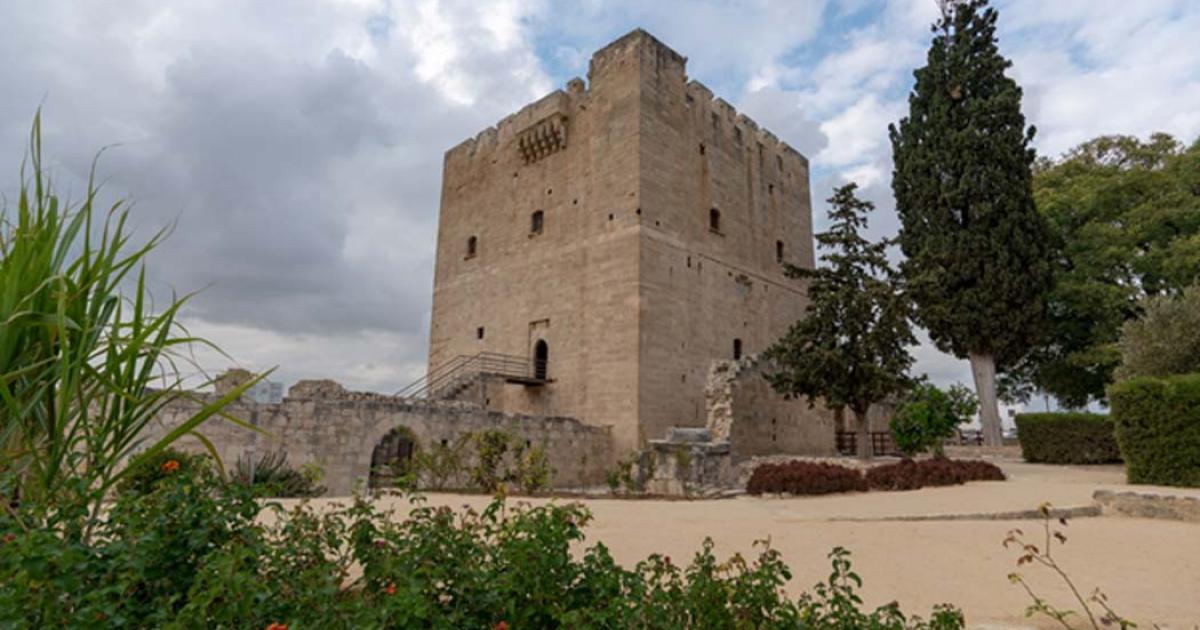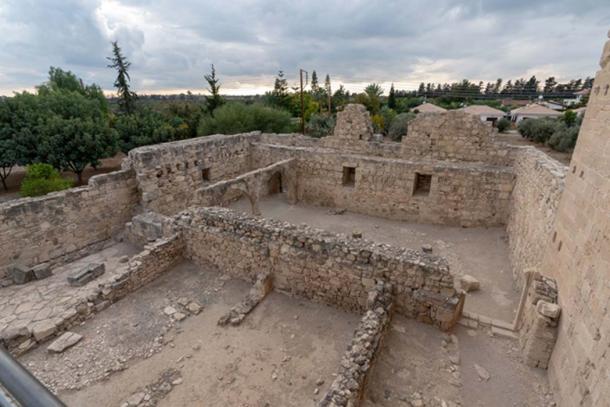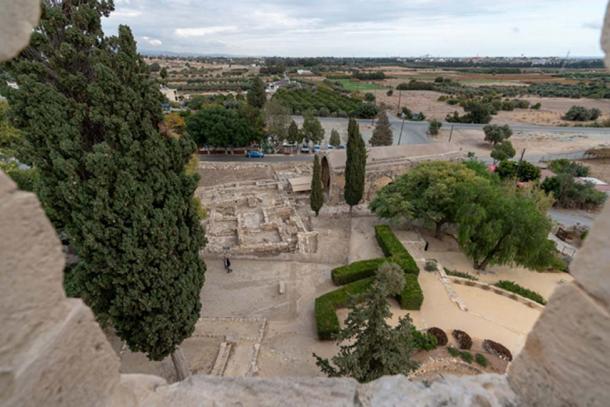
The Incredible History of Kolossi Castle - Won By Richard the Lionheart, Home to the Knights Templar, and Birthplace of the King of Wines
Kolossi Castle is a medieval castle located on the island of Cyprus. The original castle was built during the 13 th century, not long after the island was conquered by the Crusaders. Although Kolossi Castle was once an important military stronghold, this function has long since been lost. On the other hand, the castle was also a notable economic center, due to the fertile agricultural land around it and is still famous for its produce. The best-known of these is the Commandaria, a dessert wine from Cyprus regarded to be one of the oldest manufactured wines in the world.
What is the History of Kolossi Castle?
The history of Kolossi Castle may be traced all the way back to the end of the 12 th century, when Cyprus was conquered by the Crusaders. In 1191, the English king, Richard the Lionheart set sail from Sicily to the Holy Land to participate in the Third Crusade.

Entrance way to the castle surrounds.
Settlement by Shipwreck
Originally, Richard had not intended to land on Cyprus. A storm, however, had scattered his ships and three of them were driven to the island’s shores. These ships were wrecked before they could enter the port of Limassol and the shipwrecked men were taken captive. Another ship was carrying the king’s sister, Joan of England, and Richard’s betrothed, Berengaria of Navarre. Although their ship was not wrecked, it was not seaworthy and those on board, despite their status, were not well received by the island’s ruler, Isaac Komnenos, a self-proclaimed Byzantine emperor.
- How Old Are the Most Ancient Houses in a Prominent Cypriot City?
- The Ancient Ruins of Salamis, the Once Thriving Port City of Cyprus
- Why the Crusades Were Not a ‘Clash of Civilizations’

Ruins of Kolossi Castle.
Richard and the rest of his ships arrived soon after, and, displeased with Isaac’s actions, attacked the island. The English king captured Limassol, but Isaac escaped, resulting in a pitched battle between the two. The site of this battle has sometimes been identified as Kolossi, and Isaac who did not enjoy the support of the local population, was easily defeated. Thus, the English conquered Cyprus and on the 12 th of May, Richard and Berengeria were married in Limassol.
King Richard Sells the Island - Twice
Richard, however, did not hold Cyprus for long as he sold it to the Knights Templar before leaving on the 4 th of June. The Templars, however, held the island for only six months before a rebellion by the locals forced them to return Cyrus to Richard. The king sold the island once more this time to Guy de Lusignan, one of his vassals and the former King of Jerusalem.

A ground floor room of Kolossi Castle. Its use is not known for sure, but it may have been a storage area.
Kolossi Castle Becomes the Headquarters for Knights Hospitallers
In 1210, Kolossi was given by Hugh I, the third King of Cyprus, to the Knights Hospitallers. The knights built a castle there as a military stronghold. When Acre fell in 1291, the Crusaders lost their last major stronghold in the Holy Land. As a consequence of this, the Knights Hospitallers moved their headquarters to Kolossi Castle making it their ‘Grande Commanderie’.

Large hall on the second floor of Kolossi Castle. Above the fireplace is the coat-of-arms of the Magnc dynasty with the characteristic fleur-de-lis.
Ownership of Kolossi Castle Changes Again
Kolossi Castle switched owners from the Hospitallers to the Templars in 1306, though when the latter was dissolved in 1313, it returned to the possession of the Hospitallers. During the 15 th century, a new castle was built over the ruins of the old one. It is widely believed that the man responsible for the construction of this new castle was Louis de Magnac, the Hospitaller Commander of Kolossi at that time. This is due to the presence of his coat-of-arms on the wall of the castle.

The coat-of-arms of the Lusignans of Cyprus. The emblem of Jerusalem, the old Lusignan coat of arms, the emblem of Cyprus, and the emblem of Armenia are represented. The four compartments exhibit unity, since as of 1393, the king of Cyprus was also king of Jerusalem and Armenia.
The Venetians Seize Control
The Kingdom of Cyprus ended in 1489 and became an overseas possession of Venice. The Venetians profited greatly from the fertile land surrounding Kolossi. The ruins of a Venetian sugar plant are a visible reminder of the prosperity obtained by these merchants from the region. Throughout Venetian rule (which lasted till 1571), Cyprus was raided by the Ottomans, and Kolossi Castle, despite all its defensive features, was destroyed. All that remains today of this once great castle is its three-story keep and its bailey.
The Legacy Remains
The legacy of Kolossi Castle, however, is more than this medieval stronghold. Although little remains of this building, the castle is still famous today for a sweet dessert wine known as Commandaria, named after the headquarters of the Hospitallers. This is considered to be one of the world’s oldest manufactured wines and was drunk during the wedding of Richard to Berengaria. Legend has it that when the king tasted the wine, he declared it to be the ‘wine of kings and king of wines’.

An aerial view of the ruins of Kolossi Castle.
All photos are credited to Ioannis Syrigos.
Top image: The keep of Kolossi Castle. Source: Ioannis Syrigos
By Wu Mingren
References
Cyprus highlights, 2011. Kolossi castle. [Online]
Available at: https://www.cyprushighlights.com/en/2011/08/23/kolossi-castle/
Cyprus Inform, 2018. Kolossi Castle – Heritage of Knights. [Online]
Available at: https://www.kiprinform.com/en/sights_of_cyprus/kolossi-castle-heritage-of-knights/
Cyprus Land, 2018. Kolossi Castle. [Online]
Available at: http://cyprusland.com.cy/about-medieval-cyprus/kolossi-castle/
markiandolo, 2018. Kolossi Castle. [Online]
Available at: https://www.atlasobscura.com/places/kolossi-castle
Schrader, H. P., 2018. The Conquest of Cyprus: The Last Crusader Kingdom.. [Online]
Available at: http://www.defenderofjerusalem.com/cyprus.html
www.cyprusisland.net, 2018. Kolossi Castle. [Online]
Available at: https://www.cyprusisland.net/cyprus-castles/kolossi-castle















